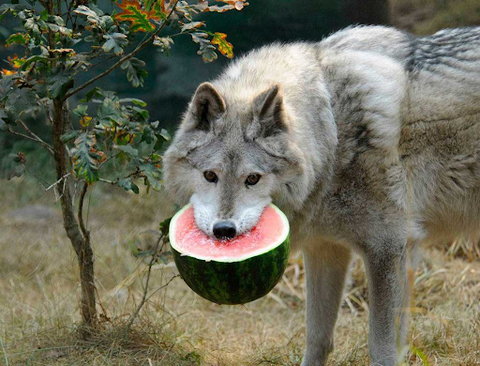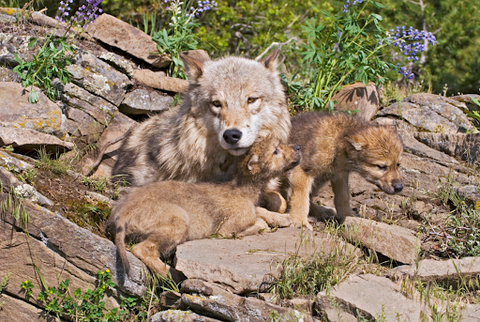Your Cart is Empty
Canis lupus is commonly known as wolf, or gray wolf, and is known due to its piercing looks and belongs to the family Canidae. It is also known as a wild dog.

There are two recognized species or types of wolf
There are about 4 subspecies of gray wolf present in North America, and these are,
The red wolf is only present in a small region of North Carolina.
The wolf may be black, brown, or gray, while its legs are yellow-white. The color is due to the fur, which has coarse guard hair and a short undercoat. The fur provides greater insulation, and they can easily survive the North temperature up to −40 °C.

Females are smaller than males. Males may have an average height of 2 meters with a half meter of a bushy tail. The average body weight is 65 kg.
The wolf ears are triangular and are small in size. They can hear sounds up to 25 kHz frequency. They can rotate their ears.

Wolves have almond-shaped yellow eyes and have tapetum lucidum, which enables them to have clear vision even at night. Wolf has keen eyesight and can detect the slightest movements.
Compared to other canids, wolves have long legs, and foot pads at their feet allow them to move swiftly over the snow.

Wolf tracks are 4 inches wide and 5 inches long, with four toes on each claw.
The teeth are strong and heavy. The jaws are powerful. The teeth are structured to crush the bones.

Wolf is adapted to different varieties of habitats and climates and select their habitat by looking at different factors such as,
Wolves inhabit tundra, pastures, wetlands, grasslands, shrub lands, rocky areas, mountains, deserts.

Wolf is present across North America and Eurasia. A few gray wolves are present in Europe, Alaska, Canada, and Asia. Alaska, Michigan, Minnesota, Wisconsin have small recovering populations of gray wolves. The red wolf is present in the coastal area of North Carolina.
The carnivorous mammals, which are a great threat to livestock and other animals, are the greatest predators, as they also attack humans. They are pack hunters, and their hunts mostly consist of,

Sometimes in certain areas, wolves may also eat

Wolves are monogamous and construct dens in summer, and females have the ability to mate every year. February and April are the mating season. The gestation period is 62–75 days, and 4 to 6 pups are produced in spring or early summer.

Wolves remain in packs of six to ten wolves; they travel long distances and hunt together. Wolves in packs can hunt bigger animals like bison, moose, elk, caribou, etc.

Wolf emits a spine-tingling howl that is used to attract its pack and exhibit different communication signals. Howls are strong enough to be heard at a distance of 130 km2. Wolf howls send territorial messages, and sometimes the howls are aggressive, and some are just like dogs or jackals like howls.

Wolves also communicate through body posture, urination with raised leg, scent, taste.
Wolf hunting is trophy hunting, and wolf packs are hunted to protect livestock, make medicines, and skin used for different purposes.
Some of the most popular wolf hunting methods are,
Comments will be approved before showing up.
